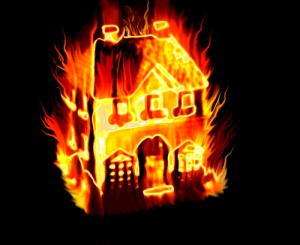Last month in what was a case of first impression in Tennessee, a unanimous panel of the state’s intermediate level appellate court joined those jurisdictions that have concluded that arson does not constitute a type of vandalism and malicious mischief. As is typically the case, the issue arose after a fire destroyed a vacant building and the carrier denied liability because the policy excluded loss by vandalism and malicious mischief during vacancy. Southern Trust Ins. Co. v. Phillips, 2015 WL 3612989, 2015 Tenn. App. LEXIS 457 (Tenn.Ct.App., Jun. 10, 2015) contains a helpful canvas of state law on both sides of the question, but the holding itself is obviously far less useful for insurers.
 The insured owned a home in Lake City that was heavily damaged by fire on February 27, 2013. It was undisputed that the dwelling was vacant at the time of the blaze and that the fire was caused by arson. The insurer denied liability and filed a declaratory judgment action, seeking an adjudication that the loss was excluded. After cross-motions for summary judgment were filed, the trial court held that the contract of insurance was ambiguous and construed it in favor of coverage.
The insured owned a home in Lake City that was heavily damaged by fire on February 27, 2013. It was undisputed that the dwelling was vacant at the time of the blaze and that the fire was caused by arson. The insurer denied liability and filed a declaratory judgment action, seeking an adjudication that the loss was excluded. After cross-motions for summary judgment were filed, the trial court held that the contract of insurance was ambiguous and construed it in favor of coverage.
The policy excluded loss by “vandalism and malicious mischief, theft or attempted theft if the dwelling has been vacant for more than 30 consecutive days immediately before the loss,” and the carrier contended that vandalism and malicious mischief encompassed arson. The insured argued that arson did not fall within the meaning of those two (undefined) terms, pointing to the fact that Coverage C for loss to personal property and the section that addressed loss to trees and shrubs both afforded protection for damage by “fire or lightening” on the one hand and vandalism and malicious mischief on the other, thereby differentiating between the two perils.
On June 10th, a 3-judge panel of the Court of Appeals affirmed. As noted above, Judge Brandon Gibson’s opinion began with a lengthy, multi-page summary of state jurisprudence on either side of this issue. It then came down in the policyholder’s favor for two reasons.
First, the court decided that the typical insured would understand vandalism and malicious mischief and arson to be separate perils. In Judge Gibson’s words:
The average policy holder or layman would conclude that arson falls within the class of “fire.” Thus, when the policy lists an exclusion for “vandalism and malicious mischief, theft or attempted theft” at a vacant dwelling, the average policy holder or layman would conclude that the policy provides coverage for fire and arson at a vacant dwelling. To equate vandalism or malicious mischief would be contrary to the understanding of the average person purchasing a policy of insurance when the terms are undefined in the policy and listed as separate perils. . . . [W]e recognize that in common speech, vandalism and arson are separate and distinct activities.
Second, the court rejected arguments bottomed on the fact that Black’s Law Dictionary and Merriam-Webster define vandalism as any willful destruction of property. The judges agreed that such definitions were broad enough to mean that arson is one type of vandalism and malicious mischief when read “independently and in isolation,” but they held that
the structure and language of the insurance policy . . . leads us to conclude that the parties did not have such a broad understanding with respect to the meaning of vandalism and malicious mischief[.] . . . [T]he insurance policy itself consistently makes the distinction between fire, on the one hand, and vandalism and malicious mischief on the other.
The broad definition of vandalism was also rejected because the panel held that that would have rendered the reference to theft or attempted theft in the vacancy exclusion unnecessary. As the decision explained:
If vandalism and malicious mischief were intended to be read broadly to encompass all property damage resulting from a deliberate act, the additional exclusion for damage caused by “theft or attempted theft” would be superfluous. If “vandalism” means “any intentional property damage” and the medium of destruction is irrelevant, then there is no need to include damage to [sic] “theft” or “attempted theft” in the vacancy exclusion.
The court therefore held that the contract of insurance “unambiguously provides coverage for fire and/or arson but does not cover vandalism or malicious mischief at a vacant dwelling.” The takeaway is clearly that the wisest course of action – as the court recognized here – is to modify the exclusion to expressly spell out that fire or arson during vacancy are also excluded events.

